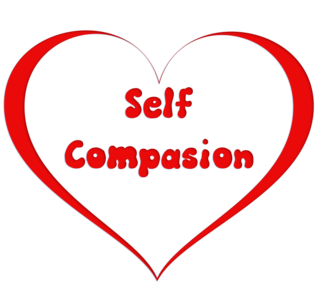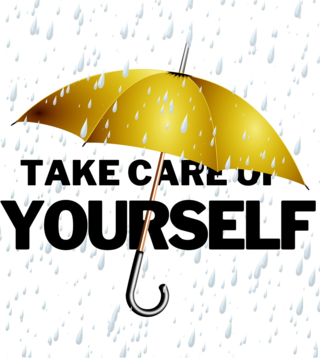Embarrassment
Shame and Compassion: Q&A With Paul Gilbert
Psychology of compassion is discussed.
Posted February 5, 2019

My interview with Prof. Gilbert continues. Previous part was published earlier today.
Prof. Gilbert, the way I understand it, compassion means “a sensitivity to suffering in self and others with a commitment to try to alleviate and prevent it” (p. 11).1 But compassion is sometimes confused with empathy, sympathy, caring, or kindness. Self-compassion, too, is at times confused with other concepts, like self-pity, selfishness, or narcissism. How do you conceptualize self-compassion? And can—or should—everyone practice self-compassion?
Yes, you are right. Again, there is a lot of confusion about compassion. If you keep clear that compassion is a motivational system, then you can see how different motives use different competencies. Empathy, for example, is a competency, it is not a motive.2 Empathy comes online when we are confronted with situations that require us to be empathic, but empathy is not necessarily good or bad. It is quite easy for people to use their empathy to be highly manipulative and for malevolent ends. Empathy isn’t always used to create benevolent ends. Empathy is a competency, not a motive; these are very important distinctions.
Sympathy on the other hand is an emotional experience of being in tune with suffering that may or may not involve accurate empathy or compassion. Kindness is different to compassion, and we have just done a study on this. Kindness is much more focused on happiness and creating the conditions for wellbeing and joyfulness, whereas compassion is specifically focused on suffering. For example, if I remember your birthday, that would be regarded as kind; but donating you a kidney is more likely to be described as compassion. If you are religious you might think that the sacrifice of Christ is compassion; we talk about the ‘compassion of Christ,’ we don’t talk about ‘the kindness of Christ,’ because we intuitively recognise that these are different forms of prosocial behaviour.
The same with self-compassion. We focus on motivation as the key, being motivated and how we create self-compassion motivation, the desire to treat oneself compassionately; and then comes the issue of being sensitive to one’s own difficulties and learning how to address them in a courageous way. Being self-insightful via self focused empathy. There might be many ways in which we do this. So self-compassion doesn’t differ from how we are compassionate to others, it’s just that we direct it to ourselves.
Self-compassion can sometimes require immense courage and empathy. We need the competencies of compassion when we are addressing self-compassion. Self-compassion is sometimes confused with self-pity. One of the big arguments that Nietzsche and Schopenhauer had with each other was over definitions. Schopenhauer saw the world as full of suffering, and he was one of the first Western philosophers to introduce Buddhist ideas into Western philosophy, whereas Nietzsche was really against the idea of compassion as a basis for human behaviour. Part of that was because Nietzsche saw compassion as pity. They were using slightly different words, and I have written about that.3
So how do I conceptualise self-compassion? Well, self-compassion is the ability to have an empathic understanding about the nature of one’s suffering, why one is suffering, and the nature of the brain that one has. That our brains are set up to be easily triggered into pain and other states of suffering like anxiety and anger and so forth, and also how to then make the motivation that ‘I am not going to be the cause of my own suffering,’ which means also addressing self-criticism, shame, etc.

As to ‘should everyone practice more self-compassion,’ the evidence is that this would be very beneficial to individuals themselves but of course also to all those around them.
So, Prof. Gilbert, what does self-compassion look like in practice?
Your question about how to be self-compassionate is very important because a lot depends upon the recognition of what you are self-compassionate about. So, are you self-compassionate because you recognize that as a result of past trauma your mind is working very much within the threat system and you have closed down various other options around you? We often use the example that we are all just versions of ourselves. We have been created by our genes and are choreographed and scripted by our environment. If I had been kidnapped as a 3-day-old baby into a violent drug gang, this version of Paul Gilbert doing this interview with you wouldn’t exist. In its place there would be a very different version—a potentially aggressive gang member who would have little empathy perhaps. That version did not have any choice as to how that version emerged any more that this version did. So, this is really important: recognizing that in fact we have far less control over the minds we end up with than we think because our environment plays such a huge role. Indeed, this is the importance of beginning to become mindful and paying attention to what my mind is doing, and then on the basis of that beginning to choose. In the Buddhist tradition this is called enlightenment, being aware of the chaotic nature of our minds. So being self-compassionate means developing a certain wisdom into the nature of mind and how we are the way we are, without blaming and shaming. Then we choose to learn about and focus on that potential pattern within us, that potential version that we can call the compassionate self. The compassion pattern of neuronal firing in our minds is the determination to choose a way of being helpful not harmful, and not acting out some of the darker sides of our mind on ourselves or on others.
Prof. Gilbert, a woman in her 30s who was a victim of child abuse related that despite years of therapy, she felt damaged, unlovable, and filled with shame. She was reluctant to try self-compassion because she believed self-compassion presented a paradox: People like her, she said, who needed kindness and compassion the most were least capable of providing it for themselves. What are your thoughts on this?
Yes, I think when people have been traumatised they find compassion very difficult, and there are a number of reasons for this. Certain types of trauma, particularly sexual abuse trauma, create serious fragmentations and disruptions in the attachment system, and the attachment system is the system that you tend to tap into when you begin to do compassion work. So, when people begin to engage with compassion you are immediately bridging into some of that trauma. To demonstrate this, consider that most people like to go on holidays and when they think of holidays it is great and wonderful. But if you go on a holiday and you get very badly beaten up and robbed, the chances are that when you come home, for the years afterwards when you start thinking about holidays actually you won’t have positive emotions, you’ll have very negative emotions and flashbacks. This is the same here. That normally when we move towards compassion and being kind and nice to each other that’s all very good, but if you have been traumatised then what happens is that when you stimulate the attachment system, and because there are trauma memories in that system, that is what comes out. So that’s when people can start to have feelings of fear again; sometimes they can be overwhelmed with sadness because they realise that for quite a lot of their lives they have felt very alone, cut off and secretive and so on.

Therefore, the path to self-compassion for people who have experienced trauma can be one of working with pain and sorrow. It is a path that we need to work through and go through in order for us to get full recovery. But it is not a simple linear process where you start to feel compassion and therefore you start to feel better. In the early days of compassion work people start to engage with things that perhaps they have been slightly dissociated from or that they have blocked off or closed down, and can therefore be difficult when they begin to re-own them. So, it is true that the people who most need the compassionate healing process within them are those who feel so frightened by it that they close it down.
We are coming to the end of the interview, and I wish to thank you again, Prof. Gilbert, for your thorough and illuminating answers to my questions. I would like to conclude our discussion by asking you to recommend resources for people dealing with shame and self-criticism, and for those who want to learn more about the practice of self-compassion.
So, in terms of recommending websites, there are quite a few now; there is our website which is www.compassionatemind.co.uk and you find a lot of materials and resources there including exercises and videos to watch. There is also the http://ccare.stanford.edu and there is https://self-compassion.org if you are interested in the particular model by Kirsten Neff and Chris Germer. The book that is probably most useful for people when they start off, particularly with the training, is a book called Mindful Compassion which is a book that I wrote with a Buddhist monk. If you want to read on how we can understand ourselves better and why we behave in such crazy ways, not to mention compassion, then do take a look at my new book Living like Crazy available on Amazon. Please do visit our website, and of course people are welcome to come to our conferences. The next one is in Edinburgh in October 2019; details are on our website and we look forward to seeing you there.
References
1. Gilbert, P. (2017). Compassion: definitions and controversies. In P. Gilbert (Ed), Compassion: concepts, research and applications (pp. 3-15). London: Routledge.
2. Gilbert, P., Catarino, F., Sousa, J., Ceresatto, L, Moore, R., & Basran, J. (2017). Measuring competitive self-focus perspective taking, submissive compassion and compassion goals. Journal of Compassionate Health Care, 4, 5.
3. Gilbert, P. (2019). Explorations into the nature and function of compassion. Current Opinion in Psychology, 28, 108-114.




